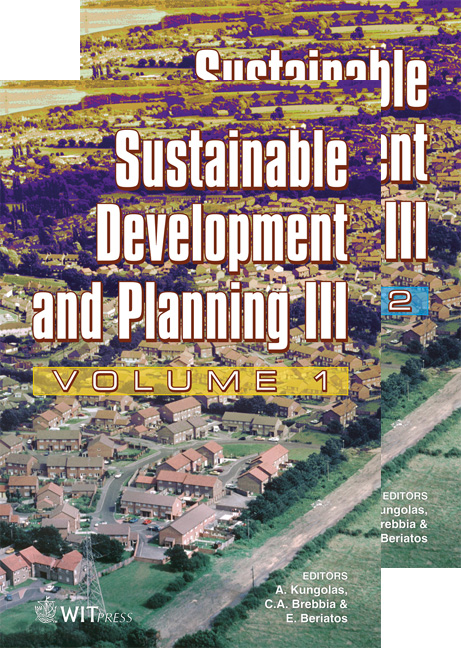Incorporating Sustainability As A Primary Design Fundamental In Residential Architecture: A Case Study Analysis Of A Single-family Residence
Price
Free (open access)
Transaction
Volume
102
Pages
9
Published
2007
Size
715 kb
Paper DOI
10.2495/SDP070221
Copyright
WIT Press
Author(s)
R. J. Michal & N. V. Chalfoun
Abstract
As recorded in the earliest existing written work of architecture, The Ten Books on Architecture written by Vitruvius in 27 BC, one of the primary goals of architecture has been to strike the balance between \“Firmness, Commodity and Delight” or structural integrity, functional efficiency, and aesthetic beauty. While the terms \“sustainability” and \“sustainable architecture” were not coined until the late twentieth century, Vitruvius’ treatise did incorporate the underlying concepts of sustainability: resource efficiency, human thermal comfort and recognition of regional environmental factors, under the category of commodity. Beginning in the late nineteenth century however, with technological advances in materials and the introduction of modern mechanical systems, these underlying sustainable concepts appeared to have been forgotten and commodity was reduced to a focus primarily on spatial relationships. These changes in design values have come at a cost. This is evidenced first by the ever-increasing dependency of modern forms on fossil fuel driven mechanical systems to create and maintain optimal human thermal comfort. This is also evidenced by the decreasing presence of uniquely regional architectural forms. The ubiquitous use of homogenous universal or \“placeless” architectural forms such as interchangeable residential housing tracts and retail strip malls represent the pursuit of brand recognition and economies of scale offered by universal standardization at the expense of regional and climatically appropriate architectural design. The purpose of this paper is to critically review and analyze the impacts on architectural form, function and appearance of a case study residence located in the extreme arid climate of the Sonoran desert in the Southwest United States, in which the concept of sustainability was incorporated as one of the primary design fundamentals. The case study residence is an approximately 2,000 square foot home built for a family of five with four bedrooms and two bathrooms and a separate attached guest bedroom and bath. This paper will provide an overview and analysis of the case study residence in terms of: 1) the original project values and goals as represented by the design and computer energy modeling process and 2) the project results as captured by the qualities (structural and aesthetic) of the final constructed physical form and its post-occupancy performance (functional, spatial and resource conservation). Keywords: sustainability, thermal comfort, thermal mass, regional, energy efficient, passive solar.
Keywords
sustainability, thermal comfort, thermal mass, regional, energy efficient, passive solar.





